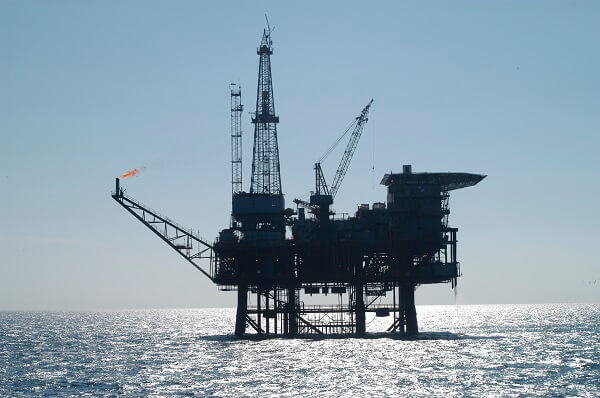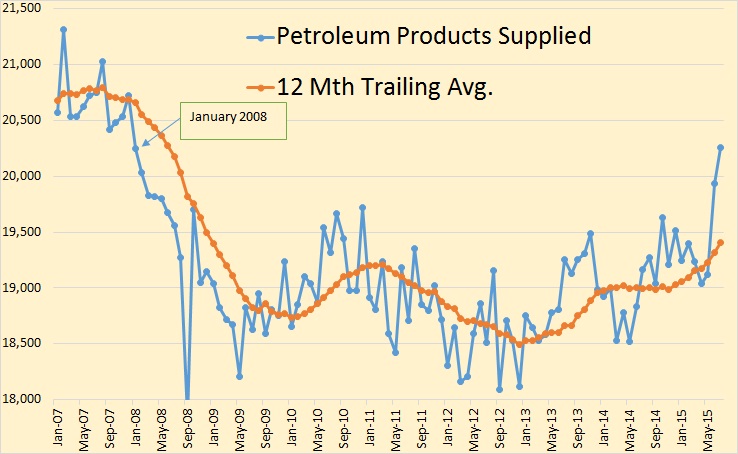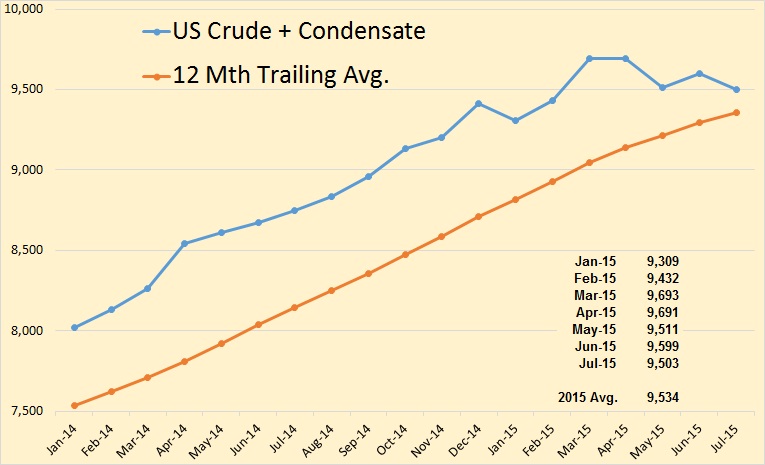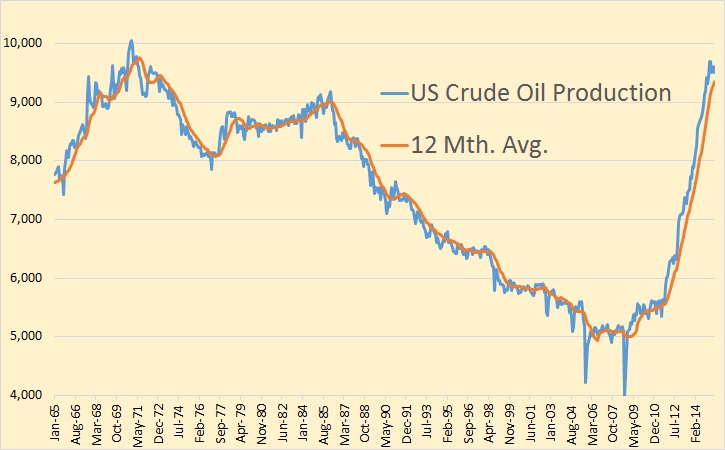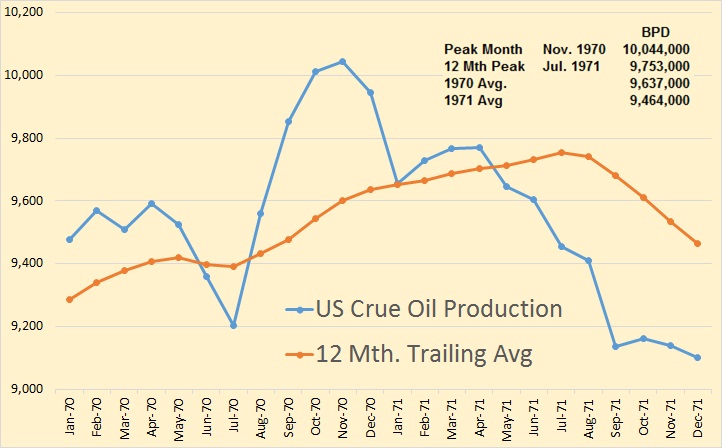In fact, nothing could be further from the truth. The Peak Oil story we have been told is wrong. The collapse in oil production comes from oil prices that are too low, not too high. If oil prices or prices of other commodities are too low, production will slow and eventually stop. Growth in the world economy will slow, lowering inflation rates as well as economic growth rates. We encountered this kind of the problem in the 1930s. We seem to be headed in the same direction today. Figure 1, used by Janet Yellen in her September 24 speech, shows a slowing inflation rate for Personal Consumption Expenditures (PCE), thanks to lower energy prices, lower relative import prices, and general “slack” in the economy.
What Janet Yellen is seeing in Figure 1, even though she does not recognize it, is evidence of a slowing world economy. The economy can no longer support energy prices as high as they have been, and they have gradually retreated. Currency relativities have also readjusted, leading to lower prices of imported goods for the United States. Both lower energy prices and lower prices of imported goods contribute to lower inflation rates.
…click on the above link to read the rest of the article…









